Abstract
The control of malate synthase formation in a fumaric acid-producing strain of Rhizopus nigricans has been found to be similar in most respects to that of isocitrate lyase, the companion enzyme of the glyoxylate bypass. A basal level is formed in a casein hydrolysate medium, which is repressed by glucose. Utilization of glucose during growth results in relief of glucose repression. Any factor which stimulates growth promotes relief of glucose repression by enhancing the incorporation of repressor metabolites derived from glucose into cell material. Thus, malate synthase formation was enhanced in glucose-containing media by the addition of zinc, or by an increase of the concentration of available nitrogen source in a synthetic medium. Both acetate and glycolate acted as apparent inducers of malate synthase, with glycolate the more effective of the two when added alone. Acetate induction was enhanced by Zn++, however, whereas induction by glycolate was unaffected. This supports the concept that acetate stimulates formation of glyoxylate bypass enzymes by a derepression mechanism, whereas glycolate or a product derived from it acts directly as an inducer. Moreover, it is indicated that the malate synthases induced by acetate and glycolate are separate and distinct, as has been shown in Escherichia coli.
Full text
PDF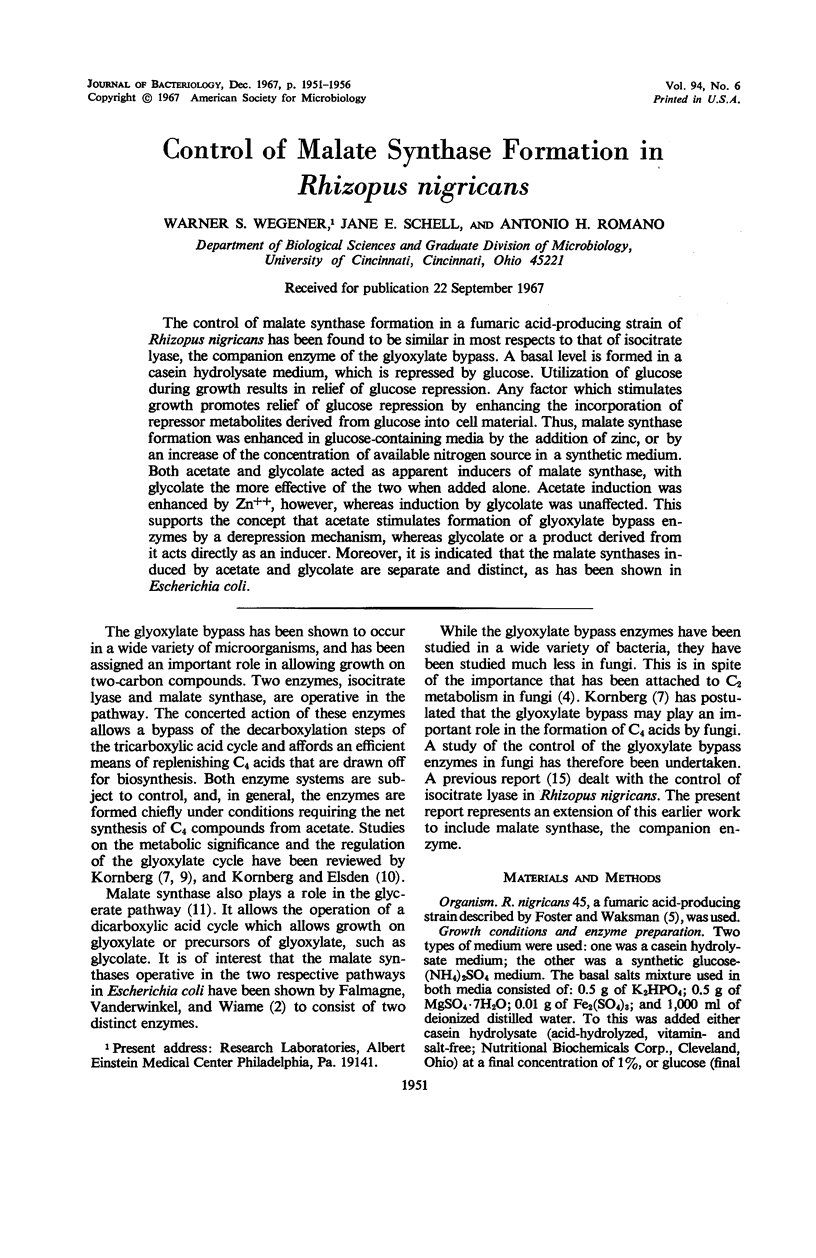
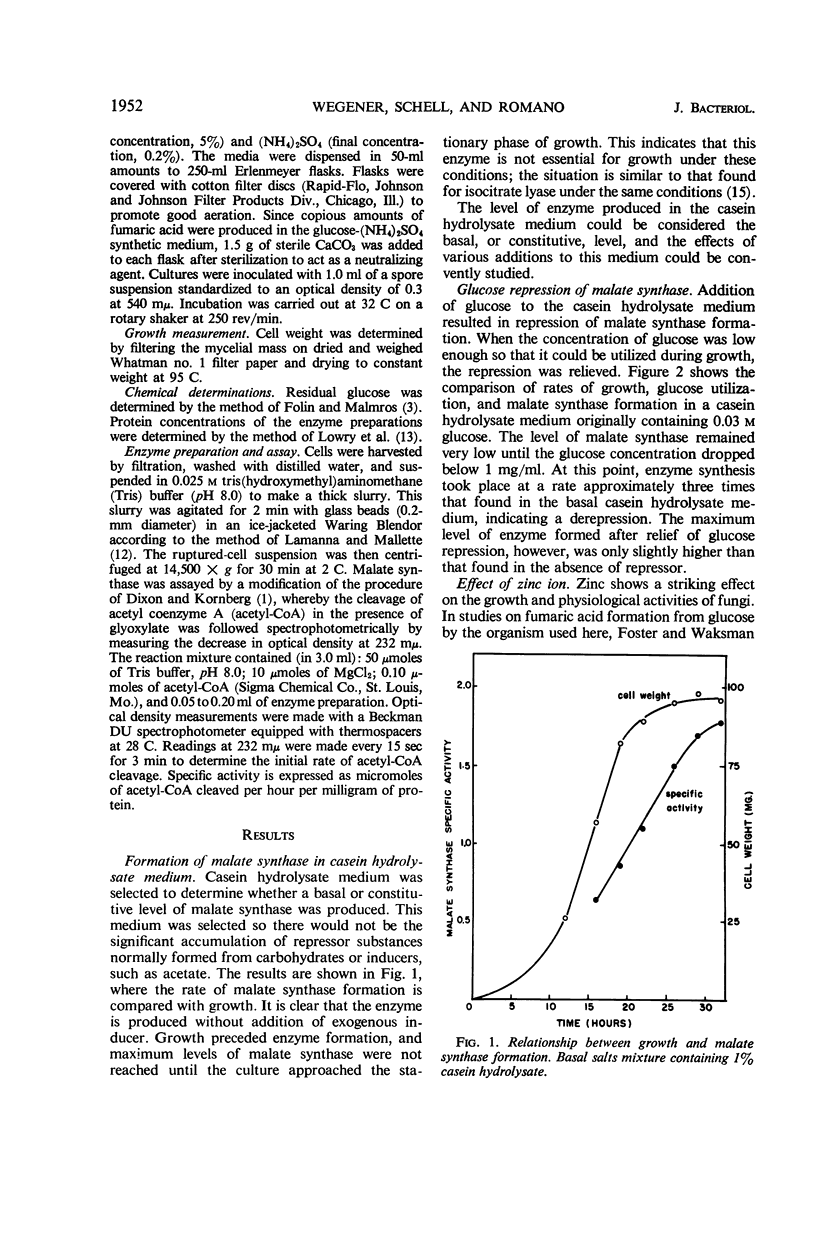
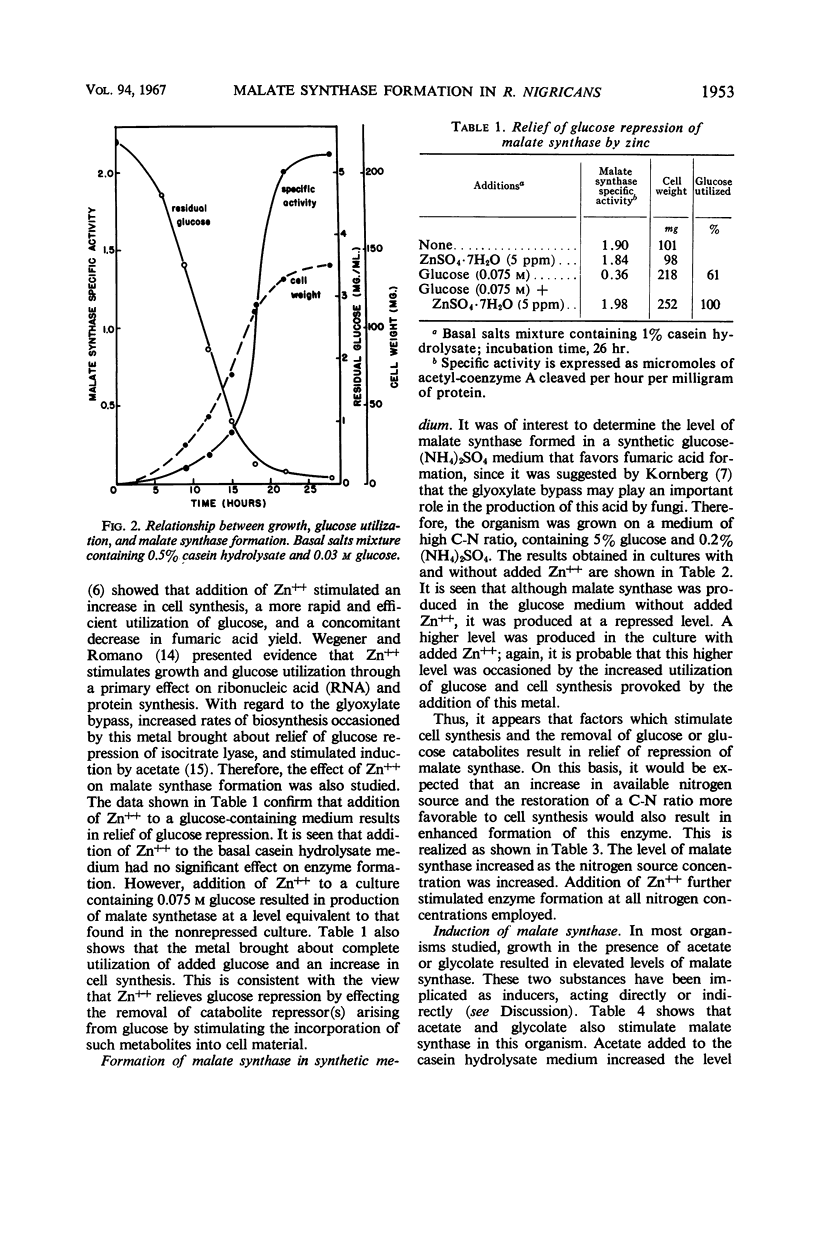
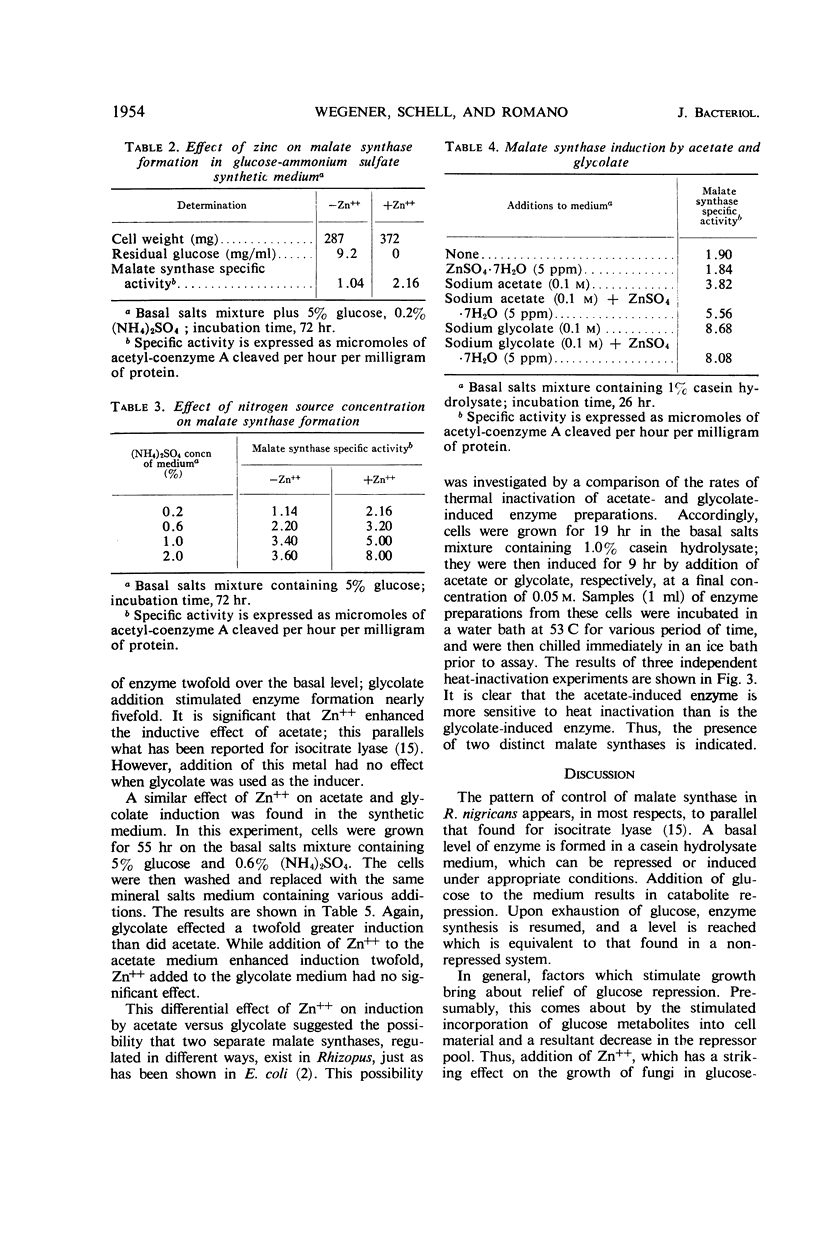

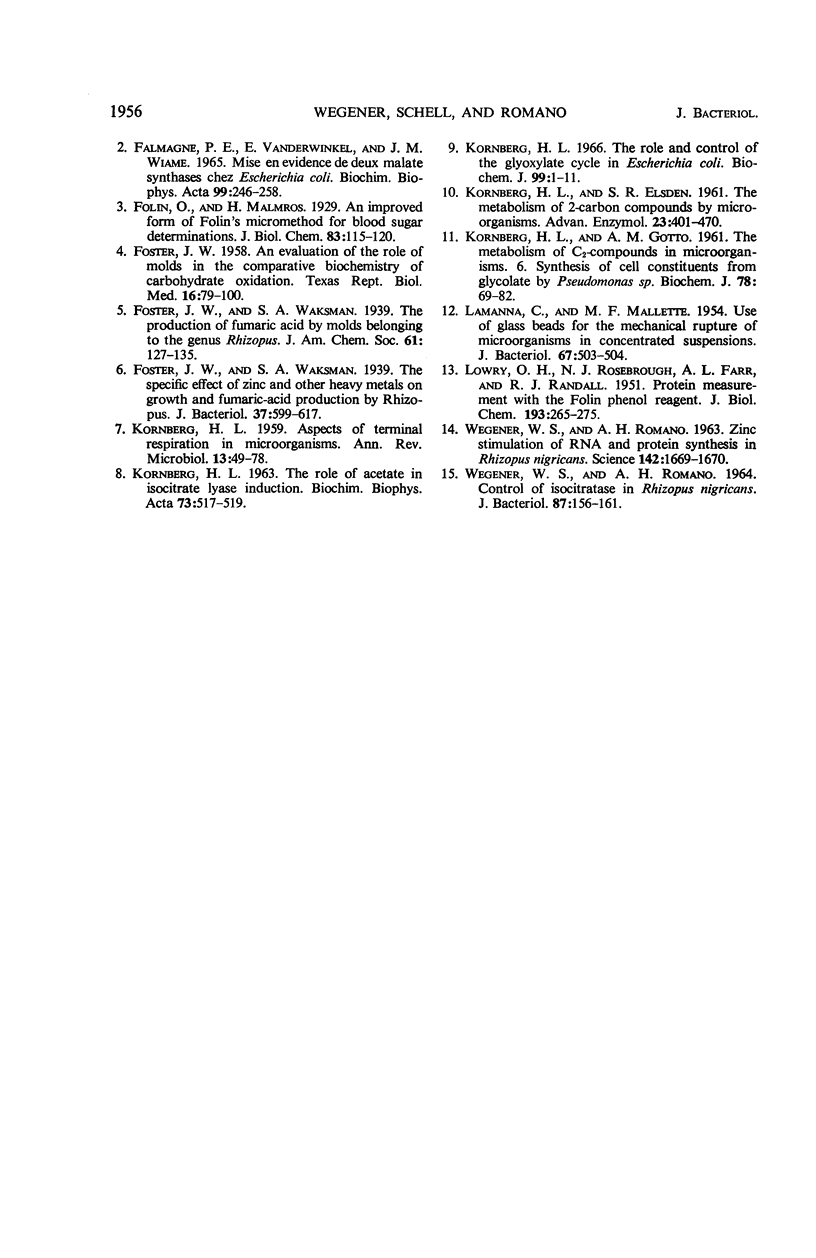
Selected References
These references are in PubMed. This may not be the complete list of references from this article.
- FALMAGNE P., VANDERWINKEL E., WIAME J. M. MISE EN EVIDENCE DE DEUX MALATE SYNTHASES CHEZ ESCHERICHIA COLI. Biochim Biophys Acta. 1965 May 18;99:246–258. [PubMed] [Google Scholar]
- FOSTER J. W. An evaluation of the role of molds in the comparative biochemistry of carbohydrate oxidation. Tex Rep Biol Med. 1958;16(1):79–100. [PubMed] [Google Scholar]
- Foster J. W., Waksman S. A. The Specific Effect of Zinc and Other Heavy Metals on the Growth and Nutrition of Rhizopus. J Bacteriol. 1939 Jun;37(6):599–617. doi: 10.1128/jb.37.6.599-617.1939. [DOI] [PMC free article] [PubMed] [Google Scholar]
- KORNBERG H. L., ELSDEN S. R. The metabolism of 2-carbon compounds by microorganisms. Adv Enzymol Relat Subj Biochem. 1961;23:401–470. doi: 10.1002/9780470122686.ch8. [DOI] [PubMed] [Google Scholar]
- KORNBERG H. L., GOTTO A. M. The metabolism of C2 compounds in micro-organisms. 6. Synthesis of cell constituents from glycollate by Pseudomonas sp. Biochem J. 1961 Jan;78:69–82. doi: 10.1042/bj0780069. [DOI] [PMC free article] [PubMed] [Google Scholar]
- KORNBERG H. L. THE ROLE OF ACETATE IN ISOCITRATE LYASE INDUCTION. Biochim Biophys Acta. 1963 Jul 9;73:517–519. doi: 10.1016/0006-3002(63)90456-6. [DOI] [PubMed] [Google Scholar]
- Kornberg H. L. The role and control of the glyoxylate cycle in Escherichia coli. Biochem J. 1966 Apr;99(1):1–11. doi: 10.1042/bj0990001. [DOI] [PMC free article] [PubMed] [Google Scholar]
- LAMANNA C., MALLETTE M. F. Use of glass beads for the mechanical rupture of microorganisms in concentrated suspensions. J Bacteriol. 1954 Apr;67(4):503–504. doi: 10.1128/jb.67.4.503-504.1954. [DOI] [PMC free article] [PubMed] [Google Scholar]
- LOWRY O. H., ROSEBROUGH N. J., FARR A. L., RANDALL R. J. Protein measurement with the Folin phenol reagent. J Biol Chem. 1951 Nov;193(1):265–275. [PubMed] [Google Scholar]
- WEGENER W. S., ROMANO A. H. CONTROL OF ISOCITRATASE FORMATION IN RHIZOPUS NIGRICANS. J Bacteriol. 1964 Jan;87:156–161. doi: 10.1128/jb.87.1.156-161.1964. [DOI] [PMC free article] [PubMed] [Google Scholar]
- WEGENER W. S., ROMANO A. H. ZINC STIMULATION OF RNA AND PROTEIN SYNTHESIS IN RHIZOPUS NIGRICANS. Science. 1963 Dec 27;142(3600):1669–1670. doi: 10.1126/science.142.3600.1669. [DOI] [PubMed] [Google Scholar]


